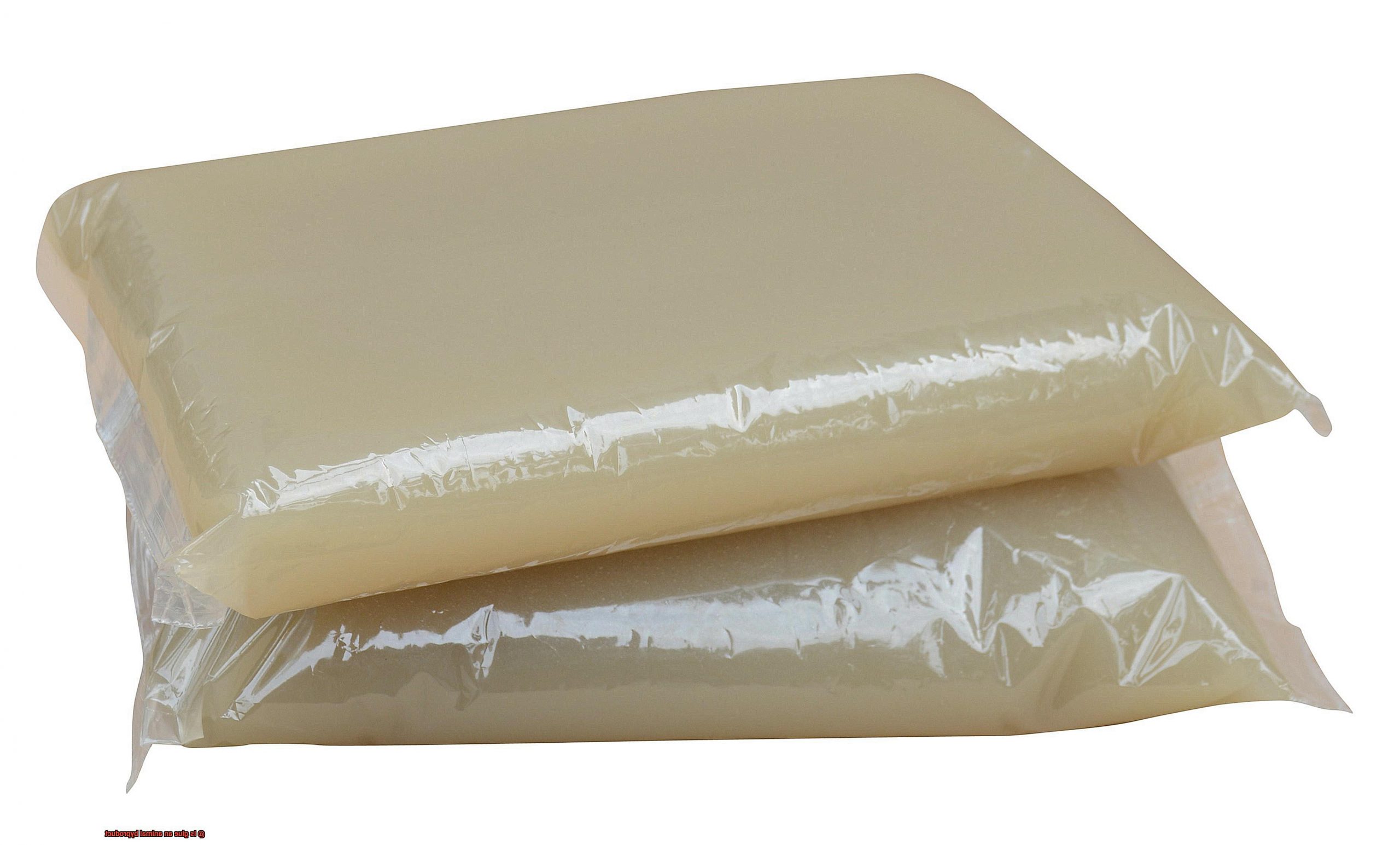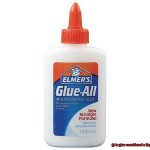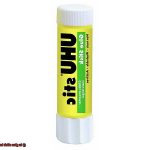Welcome to our blog post where we uncover the truth about glue and its animal connection.
Glue, that sticky stuff we use for crafts and industrial projects, has a fascinating history that involves animals. Ever wondered where it comes from?
Or if it’s made with animal byproducts? Well, you’re not alone.
Contents
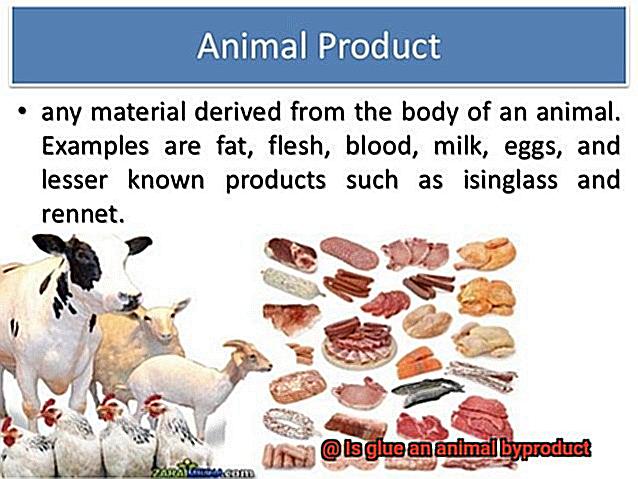
Many people are in the dark about the origins of glue and its potential ties to animals. In this post, we’ll take you on an enlightening journey through the manufacturing process of glue, the ingredients involved, and whether or not it can be considered an animal byproduct.
Get ready to dive into the intriguing world of glue production with us.
Types of Glue
Glue is a fascinating adhesive substance that is used to bond materials together. In this article, we will dive into the world of glue and explore its different types and uses. Whether you’re a craft enthusiast or simply curious, read on to discover the sticky truth.
Plant-based Glues:
For those seeking a more eco-friendly option, plant-based glues are an excellent choice. These glues are derived from natural sources such as plants or plant extracts. They are often used in arts and crafts projects because they are non-toxic and safe for the environment.
Water-based Glues:
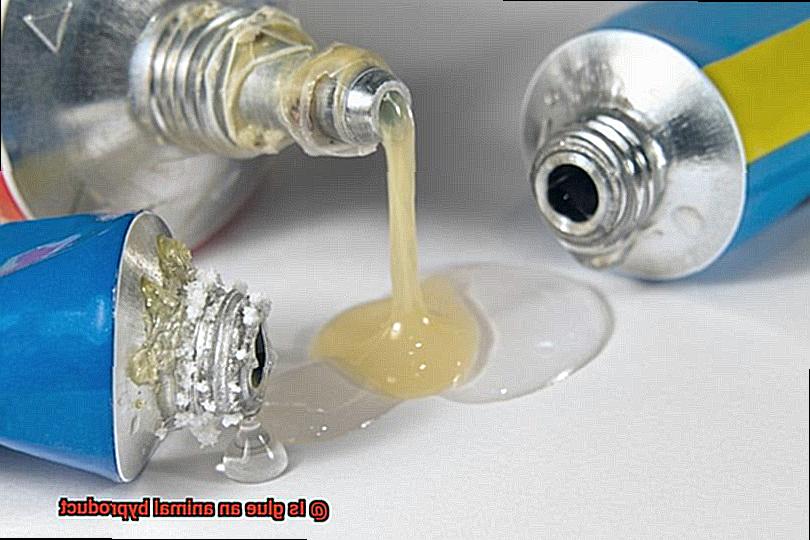
Water-based glues are perfect for projects involving children due to their easy clean-up and non-toxic properties. Some water-based glues are made from animal proteins, while others are synthetic. Regardless of their composition, they provide a strong bond and are ideal for woodworking or bookbinding projects.
Specialty Glues:
In certain instances, you may require a specialized glue for specific projects. This is where specialty glues come in. There are heat-resistant glues designed for high-temperature applications, fabric glues tailored for sewing or crafting with fabric, wood glues formulated for woodworking projects, and metal glues developed for bonding metal surfaces.
Glue is a versatile adhesive that comes in various types to suit different needs. Whether you’re a DIY enthusiast, a crafter, or simply need to fix something, there’s a glue out there for you. It’s important to choose the right glue for your project, taking into consideration the materials you’re bonding and any specific requirements.
Animal-Based Glue
Step into the enchanting world of animal-based glue, where centuries-old techniques have gifted us with remarkable adhesives. Join us in this captivating blog post as we embark on a journey to explore the diverse advantages and considerations of using animal-based glue. Discover why this adhesive has been a beloved choice for countless applications throughout history.
Advantages of Animal-Based Glue:
- Exceptional Bonding Properties: Animal-based glue boasts extraordinary bonding strength, making it an ideal choice for applications that demand a durable and long-lasting bond. Whether you’re working with wood, paper, or textiles, animal-based glue ensures a reliable adhesive solution that stands the test of time.
- Easy Application: The malleability of animal-based glues allows craftsmen and restorers to heat and soften them effortlessly. This remarkable feature ensures ease of application, enabling precise and accurate bonding in various artistic endeavors.
- Biodegradability: An inherent advantage of animal-based glue lies in its eco-friendliness. As a natural product, animal-based glues gradually break down over time, significantly reducing their impact on the environment when compared to synthetic alternatives.
Limitations of Animal-Based Glue:
- Sensitivity to Moisture: It’s essential to note that animal-based glues can be sensitive to moisture, rendering them less suitable for high humidity environments. Prolonged exposure to excessive moisture may cause softening or tackiness, compromising the integrity of the bond.
- Temperature Fluctuations: Extreme temperatures can affect the performance of animal-based glues. When exposed to intense heat or cold, these glues may degrade or lose their adhesive properties, limiting their effectiveness in certain conditions.
- Ethical Considerations: For those conscientious about animal welfare, animal-based glues may raise ethical concerns. Derived from animal byproducts, these glues prompt some individuals to seek alternative adhesives that do not rely on animals.
Synthetic Glue
Move aside, animal-based glues. There’s a new adhesive superstar in town, captivating hearts and minds with its extraordinary versatility and ethical production methods. Introducing synthetic glue, the adhesive revolution that can bond almost anything together, from wood to metal, without relying on animal byproducts. Join us on this exploration of the advantages and applications of synthetic glue that are sure to ignite your curiosity.
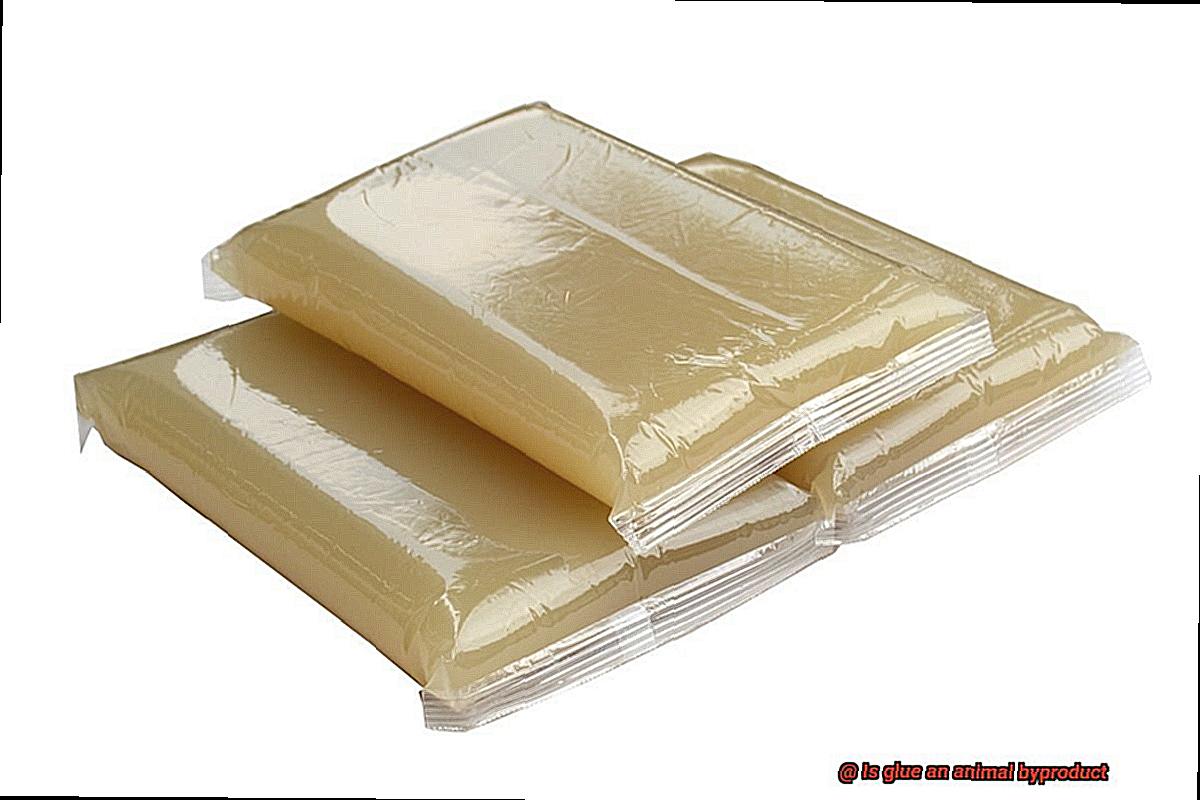
Versatility at its Finest:
Synthetic glue is the chameleon of the adhesive world, effortlessly adapting to various applications. Whether you’re a woodworking enthusiast, an arts and crafts aficionado, or a construction pro, synthetic glue has got your back. Its liquid, paste, or solid forms can bond materials such as wood, plastic, metal, fabric, and paper with ease. Say goodbye to limitations and hello to boundless possibilities.
Powerful Formulations:
The secret behind synthetic glue’s exceptional strength lies in its meticulously crafted chemical compositions. Prepare to be amazed by the wonders of polyvinyl acetate (PVA), cyanoacrylate, epoxy resins, and polyurethane – the stars of the synthetic glue show. These compounds undergo specific reactions to produce adhesives with unrivaled bonding strength, flexibility, and resistance to moisture or heat.
Polyvinyl acetate (PVA) glue takes center stage as the jack-of-all-trades in the synthetic glue family. With its water-based formula, it guarantees a strong bond upon drying, making it perfect for woodworking projects and general household repairs.
For those seeking instant bonding power, cyanoacrylate glue (super glue) steals the spotlight. Its rapid bonding capabilities make it ideal for electronics assembly, model building, and small repairs that demand swift results.
When high strength and durability are non-negotiable, epoxy resins come to the rescue. These two-component adhesives are the go-to choice in automotive, aerospace, and industrial applications where a strong bond is essential.
Last but certainly not least, polyurethane glue shines bright with its remarkable ability to unite a wide range of materials. Its strong initial tack and flexibility make it a favorite in woodworking, construction, and manufacturing industries alike.
History of Animal-Based Glue
Animal-based glue has a rich and storied history that stretches back to ancient civilizations, where it played a vital role in construction, craftsmanship, and even cosmetics. The journey begins in ancient Egypt, where resourceful craftsmen concocted a glue from the magical protein known as animal collagen. This protein, found in the connective tissues of animals, was extracted and used for various purposes. As time marched on, the Greeks discovered that boiling animal hides and bones unlocked the collagen needed to create woodworking and pottery glues.
But the story doesn’t end there. The Romans also embraced animal-based glue, utilizing its sticky wonder for constructing grand buildings and binding their beloved books. Their ingenuity and versatility knew no bounds.
Fast forward to the Middle Ages and Renaissance period, where medieval monks took center stage as the glue masters of their day. These artisans crafted their own glues using animal byproducts like bones, hides, and hooves. They knew how to make something out of nothing.
As the Industrial Revolution dawned, glue manufacturing underwent a revolution of its own. Machinery and industrial processes allowed for increased production capacity and better quality glues. However, synthetic glues made from petroleum-based chemicals began to emerge in the 19th century, threatening to steal the limelight from our beloved animal-based glues.
But fear not, glue aficionados. Animal-based glue still finds its place in today’s world. Woodworkers, musical instrument makers, and restoration experts swear by its unique properties and compatibility with natural materials. In fact, it is considered more environmentally friendly than synthetic glues because it is biodegradable and derived from renewable resources.
Advantages of Synthetic Glue
Glue is the invisible force that holds our world together, from fixing broken items to creating awe-inspiring works of art. Among the vast array of glues available, synthetic glue has emerged as the top choice for numerous industries and individuals alike. In this article, we will delve into the advantages of synthetic glue, exploring why it has become the adhesive of choice in today’s fast-paced world.
Advantage 1: Long Shelf Life
Imagine the frustration of reaching for glue only to find it has deteriorated over time. Synthetic glues alleviate this concern with their remarkable long shelf life. These glues can be stored safely for extended periods without losing their adhesive properties. Whether you are a professional craftsman or a DIY enthusiast, synthetic glue ensures that you always have a reliable and effective adhesive at your fingertips.
Advantage 2: Water Resistance
In the realm of woodworking and construction projects, moisture poses a constant challenge. Synthetic glues offer a practical solution with their exceptional water-resistant properties. Formulated to withstand water and high humidity levels, these glues ensure that bonds remain intact and durable even in demanding conditions. So, whether you are crafting furniture or repairing outdoor structures, synthetic glue guarantees longevity and reliability.
Advantage 3: Unparalleled Bonding Strength
One standout feature of synthetic glues is their extraordinary bonding strength. These ingeniously engineered glues create powerful adhesion between various materials such as wood, metal, plastic, and fabric. This versatile nature makes them indispensable in a wide range of industries, from manufacturing to arts and crafts. With synthetic glue in your arsenal, rest assured that your creations will stay firmly intact.
Advantage 4: Lightning-Fast Drying Time
Time is a precious commodity, especially when working on projects. Natural glues often take hours or even days to fully dry and set. Synthetic glues, on the other hand, offer a rapid curing process. This means that you can forge ahead with your project without enduring lengthy waiting periods for the glue to dry. With synthetic glue, you can save time and keep your creativity flowing.
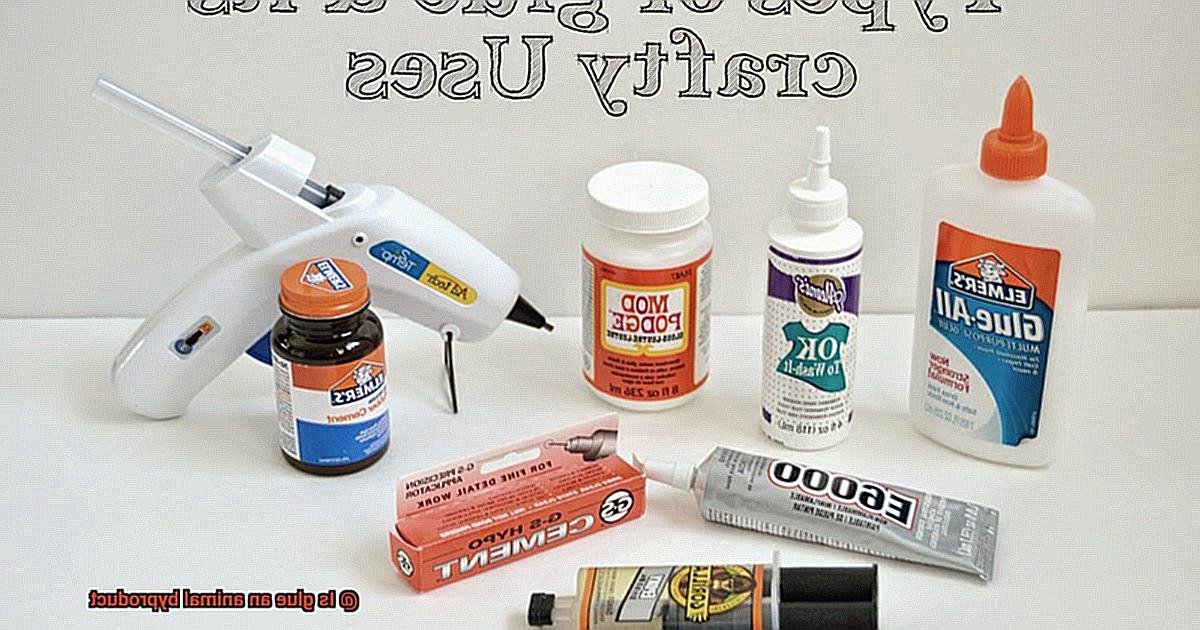
Advantage 5: Astonishing Versatility
Every project is unique, and different materials demand different types of glue. Synthetic glues come in a myriad of formulations tailored for specific applications. Whether you require a specialized adhesive for woodworking, metal bonding, fabric adhesion, or any other need, there is a synthetic glue designed to meet your requirements. This exceptional versatility empowers users to select the perfect glue for their projects, ensuring optimal performance and outstanding results.
Is There Still Animal-Based Glue in the Market?
In the ever-evolving world of adhesives, animal-based glue has faced a decline in popularity in recent years. Advances in technology have led to the development of synthetic adhesives that offer superior performance and versatility. Additionally, growing concerns about animal welfare have played a significant role in the shift towards cruelty-free alternatives. However, despite this decline, there are still niche markets and industries where traditional animal-based glue continues to find its place.
The Rise of Synthetic Adhesives:
Synthetic adhesives, derived from petroleum-based chemicals, offer improved bonding strength, durability, and resistance to environmental factors. These adhesives have longer shelf lives, faster drying times, and greater versatility compared to animal-based glues. They are widely used in industries such as construction, automotive manufacturing, and electronics.
Changing Consumer Preferences:
Increasing awareness and concern for animal welfare have led to a demand for cruelty-free products. Consumers are actively seeking alternatives that do not involve the use of animal byproducts. Companies have responded by shifting towards non-animal alternatives in their adhesive formulations.
Industries Still Using Animal-Based Glue:
The restoration and conservation industry often relies on traditional materials to maintain authenticity when restoring antique furniture or artworks. Animal-based glue is sometimes preferred because it can be easily reversible and does not cause damage to delicate surfaces. Some craftsmen and hobbyists who practice traditional woodworking techniques choose animal-based glue for its unique properties and historical significance.
Market Availability and Regulations:
The availability of animal-based glue may vary depending on location and market demand. Commercial products using animal-based glue are subject to laws and regulations regarding animal welfare and proper labeling.
Benefits of Reading Product Labels and Specifications
Well, fret no more. By taking a few minutes to read product labels and specifications, you can become a glue guru and make informed decisions that will stick with you (pun intended).
So, why should you bother reading those labels? Let me break it down for you:
- Make informed purchasing decisions: Glue is not a one-size-fits-all solution. By reading the labels and specifications, you can gather important information about the ingredients used, manufacturing processes, and potential allergens or harmful substances. Armed with this knowledge, you can choose a glue that best suits your specific needs and preferences.
- Ensure your safety: Glue may seem harmless, but some adhesives contain hazardous chemicals. Reading labels can provide warnings about potential hazards and proper usage instructions. This is especially important if you have little ones running around or if you’re prone to accidents (we won’t judge.).
- Go green with glue: If you’re an eco-warrior, reading labels can help you identify environmentally-friendly options. Look for glues made from sustainable materials or those that have been produced using eco-friendly manufacturing processes. You’ll be sticking it to Mother Nature’s heart in no time.
- Meet your dietary restrictions: Wait, dietary restrictions and glue? Yes, indeed. Some glues contain animal-derived ingredients. By reading labels, you can avoid products that don’t align with your vegetarian or vegan lifestyle. Who knew glue could be so complicated?
- Compare like a pro: Labels allow you to compare different glues based on ingredients, performance claims, and more. Need industrial-strength adhesive for a tough job? Want a quick-drying glue for your arts and crafts projects? Labels have got your back.
- Hold manufacturers accountable: By demanding transparency through reading labels, you can ensure that manufacturers are held accountable for their claims. When you have access to accurate information, you can make informed choices and support companies that prioritize quality and honesty.
So, next time you find yourself in the glue aisle, armed with your newfound knowledge, take a moment to read those labels. Your purchasing decisions will be wiser, safer, and more aligned with your values. Go forth and stick like a pro.
1a0EL1gibdU” >
Conclusion
In conclusion, glue can be both a product of animals and a man-made creation, depending on the specific glue you use. Throughout history, animal-based glues were widely used and crafted from byproducts such as bones and hides. These glues possessed remarkable strength and adaptability, making them a popular choice. However, in our modern era, synthetic glues have taken center stage, devoid of any animal components.
Synthetic glues have become the preferred option for binding materials together. Formulated with chemicals like polyvinyl acetate (PVA) or cyanoacrylate, these glues offer extraordinary bonding power. Whether it’s wood, plastic, metal, or fabric, synthetic glues effortlessly unite an extensive array of materials.
For those seeking an environmentally-conscious alternative, plant-based glues derived from natural sources like plants or plant extracts are readily available. Water-based glues are particularly suitable for projects involving children due to their easy clean-up and non-toxic nature.
Moreover, there exist specialized glues designed to cater to specific project requirements that demand exceptional adhesives.
Selecting the right glue for your endeavor is crucial; consider the materials involved and any specific needs they may have. By perusing product labels and specifications diligently, you can make informed purchasing decisions that prioritize safety, dietary restrictions (if applicable), comparison of options, accountability from manufacturers, and support for companies that prioritize quality and transparency.

